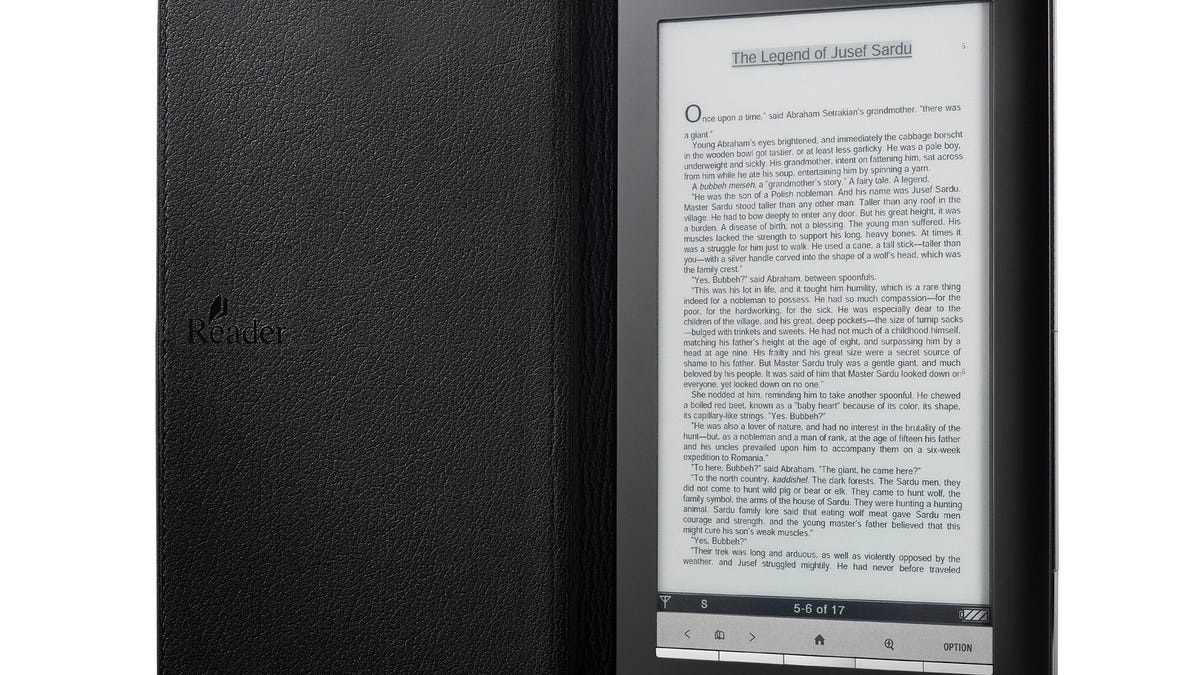Sony unveils new high-end Reader Daily Edition, expanded library partnership
The Sony Reader Daily Edition is the company's first e-book reader with a built-in 3G wireless connection.

Sony on Tuesday announced its first e-book reader with built-in wireless capability. The new Reader Daily Edition offers an integrated 3G wireless connection, allowing it to access Sony's online bookstore as well as yet-to-be-announced newspaper and magazine subscriptions. The unit--which boasts a 7-inch touch screen (displayable in portrait or landscape mode)--will sell for $399 when it debuts in December. Wireless service is provided by AT&T with no direct charge to the customer.
The Reader Daily Edition joins the already announced
Sony used the launch event at the New York Public Library to highlight some notable new features of its e-book platform. Most notable is the expansion of support for library loans to the Sony Readers. If your local library supports electronic lending, members will be able to download the borrowed books and transfer them to the Reader for 21 days (after which the files expire). Sony is partnering with Overdrive.com to make it easier to search for available books at participating libraries.
Also of note is the launch of version 3.0 of Sony's eBook Library software, which now offers support for Macs (as well as Windows). The software is used to move purchased files (as well as other supported content, such as a PDF and Epub files) from the computer to the Reader. (While supported, the PC step won't be required for the Reader Daily Edition, which can access online content directly.)
Sony also highlighted its new "open" Epub format, which the company is moving to from its former proprietary BBeB format. While the Epub books at Sony's store will still be encoded with DRM, it will allow the Sony Reader to also work with files purchased from BooksOnBoard, NetGalley, Powells.com, and any other retailer that adopts the Adobe-backed standard. (Notably, that does not include Amazon (which has its own proprietary Kindle standard) nor Barnes & Noble (which is working on its own Epub flavor for its forthcoming Plastic Logic reader).
The trio of Sony Reader products reinforces the fact that Sony is not ceding the market to Amazon. Indeed, the company is offering some nice alternatives: a wallet-friendly $200 price point on the entry-level unit and wider file compatibility. Even more enticing to many will be the wealth of free content not available on the Kindle: the Sony Readers can access the hundreds of thousands of public domain Google Books, plus the free library loaners. The library loans are compelling, to be sure, but Epub collections are not comprehensive. On the New York Public Library site, we found notable titles such as Twilight and Freakonomics, but not a lot of other top 10 selections.
The built-in wireless access of the Daily Edition, meanwhile, brings Sony onto a features parity with the Kindle. But even with the touch screen (which the Kindle doesn't have), the extra $100 versus the Kindle's current $299 pricetag might be a hard sell to recession-addled shoppers.
We'll have full hands-on reviews of the Pocket Edition and Touch Edition Readers as soon as they arrive at the office (should be in the next week or two). In the meantime: what do you think? Do these new products and features add up to a Kindle killer? Is $199 still too expensive for an e-book reader? Or are you still waiting for better screens and cheaper titles? Share your thoughts below.

